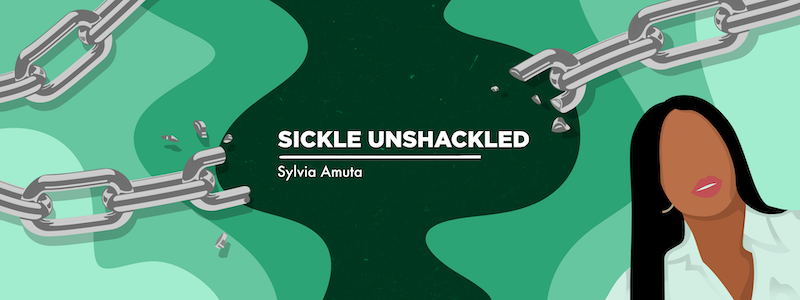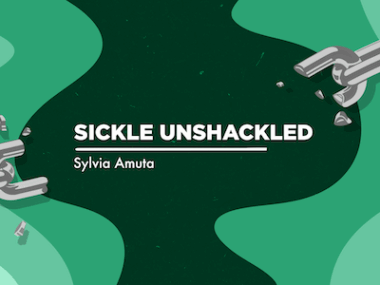I’m learning to manage my anxiety as a sickle cell caregiver
Feeling stressed and on edge affects not only me, but also my young cousin
Written by |

Caregiving is a journey I hold close to my heart, especially as it involves my dear cousin Ada, a vibrant adolescent and a true warrior living with sickle cell disease. Yet I must admit, this journey hasn’t been without its shadows. As a healthcare professional who has seen the worst-case scenarios of sickle cell complications, I often find myself wrestling with anxiety. It’s a battle I didn’t recognize at first, but I’m learning to manage my anxiety for Ada’s sake — and my own.
Anxiety crept quietly into my life disguised as concern. It started with late-night worries about Ada’s next crisis, her future, and what her life might look like in a world that sometimes feels relentlessly grim. Social media didn’t help. It became a vortex of bad news — from global disasters to personal health tragedies — that heightened my fear.
As a doctor, I’ve witnessed the dire complications of this condition firsthand. I’ve seen patients lose limbs, endure unrelenting pain, and even lose their lives. These experiences, combined with my overconsumption of distressing news, amplified my anxieties to another level.
I was in denial at first, so I told myself that my stress was just a sign of how much I cared, a natural extension of my profession and my role as Ada’s caregiver. But the signs became hard to ignore as I found myself often irritable, snapping at the smallest inconveniences, and being overly controlling in situations where I wanted to shield Ada from anything that could harm her — even at the cost of her independence.
What really opened my eyes was Ada herself. She’s astoundingly perceptive, and she started picking up on my tension. I realized that my anxiety was affecting not only me, but also her. Anxiety, after all, is contagious. If I’m nervous and on edge, it’s only natural for her to feel it, too, which could, in turn, exacerbate her condition.
Just the other day, Ada came down with a mild flu, and I found myself so furious with her for going out without her umbrella, coming home drenched from the rain the day before. My frustration quickly spiraled into panic as my mind raced with worst-case scenarios. This simple flu could escalate into a full-blown crisis, possibly landing her in the hospital again. Seeing the anxiety I had stirred up in her as she burst into a puddle of tears, I realized something had to change.
Finding ways to manage my anxiety
So I began a journey toward managing my anxiety. It’s not about erasing worry entirely — that’s unrealistic — but about not letting it rule me.
I started by setting boundaries with social media. I curated my feed, unfollowed accounts that added to my stress, and set time limits for scrolling. I also learned to challenge catastrophic thoughts. Just because I’ve seen the worst doesn’t mean it will happen to Ada. Her story is her own, and it doesn’t have to follow a grim script.
Mindfulness, breathing exercises, journaling, and even small moments of gratitude helped ground me when my mind started spiraling, which allowed me to develop healthier coping mechanisms.
Most importantly, I’ve learned the power of being present. When I focus on the here and now, I can see Ada for who she is — a funny, resilient, and intelligent young girl — not as a patient or a ticking time bomb. We spend more time laughing, sharing stories, and enjoying simple pleasures, such as cooking her favorite meals or debating about which movies to watch. These moments remind me of something vital: Worrying doesn’t change the future. It only robs us of the present.
This realization has been transformative; by managing my own anxiety I can help Ada feel secure and supported. She doesn’t need me to be a superhero; she just needs me to be there for her, fully present and not consumed by fear. It’s OK to feel anxious sometimes — it’s part of being human. However, we must be mindful not to let it grow to the point where it overwhelms our mental well-being.
Note: Sickle Cell Disease News is strictly a news and information website about the disease. It does not provide medical advice, diagnosis, or treatment. This content is not intended to be a substitute for professional medical advice, diagnosis, or treatment. Always seek the advice of your physician or other qualified health provider with any questions you may have regarding a medical condition. Never disregard professional medical advice or delay in seeking it because of something you have read on this website. The opinions expressed in this column are not those of Sickle Cell Disease News or its parent company, Bionews, and are intended to spark discussion about issues pertaining to sickle cell disease.





Leave a comment
Fill in the required fields to post. Your email address will not be published.